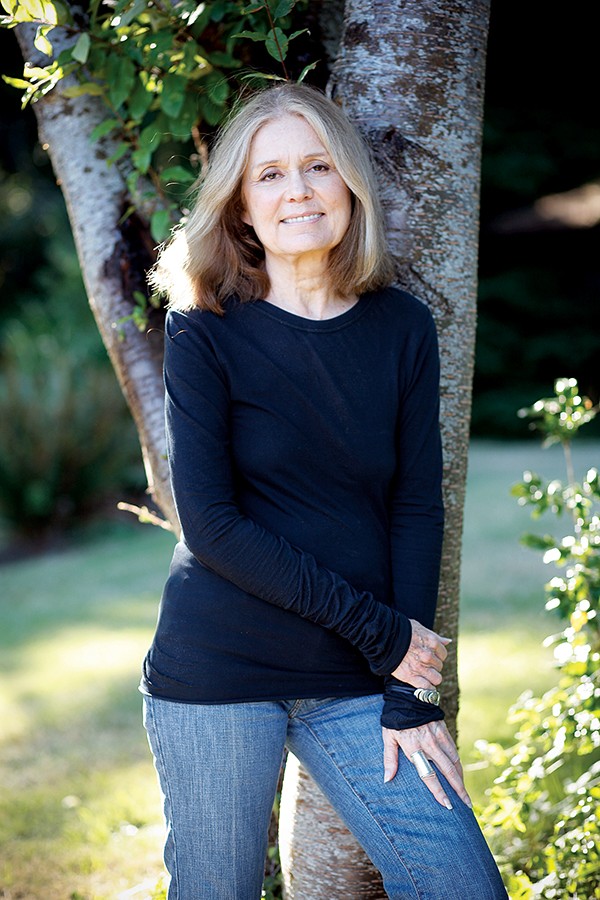Craig Minton will tell you straight up — he’s an adrenaline junkie. He craves the surge he feels driving fast cars or riding menacing bulls. But he’ll also tell you he could have never predicted his need for speed would spiral into a 15-year addiction to pain pills.
As a young man, the 42-year-old swing-shift worker and father of four loved to rodeo. The thrill of entering the dusty arena as his name was called, the icy clang of the steel gate swinging wide as his ride exploded into the ring, the heft of a 1,600-pound bull twisting violently as he held fast, desperately trying to last the eight seconds required to count as a qualified ride.
It was such a rush.
Then, during a rodeo ride in the late 1990s, Minton was thrown from a bull and knocked unconscious for more than an hour. Rushed to an area hospital, the CT-scan revealed a herniated disk. Following a brief hospital stay, Minton was sent home with hydrocodone, a prescription pain medication. Hydrocodone, like oxycodone, is one of several opioids doctors routinely prescribe for treating pain. (See sidebar) All are strong, Schedule 1 narcotics. While they do the job, there is also high potential for abuse. And what physicians often fail to tell their patients is how very addictive these pain meds can be.
Within months, Minton was hooked. In his addiction, he joined millions of Americans traveling down a harrowing rabbit hole, chasing the scream.
The Growth of an Urgent Public Health Problem
The surging opioid epidemic has made many national headlines this year, jumping to the fore as one of the country’s most urgent public health issues. Last year, overdoses from prescription drugs, opioid pain medications, and heroin surpassed car accidents as the leading cause of injury-related death in America, according to the U.S. Centers for Disease Control and Prevention (CDC). The Substance Abuse and Mental Health Services Administration adds that nearly 2 million people suffer from opioid-use disorder related to prescription pain medications, which has contributed to both increased heroin use and the spread of HIV and hepatitis C.
In response to this alarming trend, President Obama signed into law the Comprehensive Addiction and Recovery Act on July 22nd, authorizing more than $181 million annually in new funding to fight the opioid epidemic and expand much-needed access to care. The law awaits Congressional appropriation.
Meanwhile, Tennessee has been making headlines of its own. The state ranked number two nationally in 2012 for opioid prescriptions and consumption. In 2014, opioid overdose claimed 1,263 lives — more people than died in auto accidents and gunfire. By 2015, Tennessee ranked among the top 10 states nationally for death by drug overdose.
The state’s epidemic started several years ago in rural northeast Tennessee and gradually spread westward to Shelby County, impacting people from all walks of life along the way. As doctors wrote more and more prescriptions for pain meds, unintentional overdoses followed. Between 2001 and 2011, overdoses jumped by 250 percent, notes Steven Baumrucker, system medical director, hospice and palliative medicine, Wellmont Health System, who regularly presents to physicians about safe prescription practices.
That widespread abuse of painkillers, coupled with an alarming rise in heroin use, led to the convening of forums in Nashville and Knoxville last April, where state health officials, law enforcement, and medical professionals gathered to address what the Tennessee Department of Health labels as our “number one public health issue.”
In Memphis, healthcare providers at ERs such as St. Francis and Regional One Health have seen a significant uptick in the number of people coming in needing pain medication or worse, being treated for overdose. The abuse extracts a toll — on users and the healthcare system.
“It’s definitely on the rise,” notes Chantay Smartt, medical director for emergency medicine at Regional One. “I’ve seen more overdoses in the last eight to 10 months than I have in my whole career. It’s hard to provide care for families because they don’t understand what’s going on with their loved ones. They want us to admit them, but that’s not the standard of care we provide. We treat symptoms, we don’t do detox.”
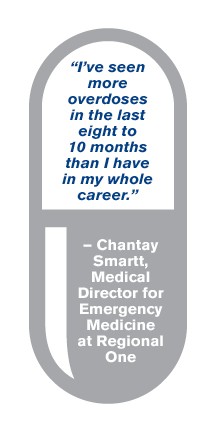
How Did We Get Here?
Back in the mid-1990s, opioid narcotics barely registered a blip on the radar screen of pharmaceutical sales. But two issues drove demand. The first came from the medical community, notes Baumrucker. “We [doctors] were told [by the Joint Commission, the nation’s oldest and largest standards-setting body in health care] that we were undertreating pain and that we could get into legal trouble” if left unaddressed. So in 2001, healthcare providers were directed to begin asking patients about their pain. In addition to checking other vitals like blood pressure and pulse rate, pain was made the “fifth vital sign” used to assess patients.
The second was largely due to the marketing pitch for OxyContin in which Purdue Pharma misled physicians and patients by claiming the potential for addiction was slight. That claim was all that was needed to amp up sales. By the early 2000s, the tidal wave of opioids had begun to surge.
Treating Ongoing Pain
Minton says the hydrocodone eased his pain at first, and he took his meds as prescribed. But over time, instead of needing less medication to feel better, he found himself needing more. Two pills a day increased to four, then eight, until he was popping 90 to 100 pills a month “just to feel normal.”
“After your brain clears out and you’re no longer being told to take it, the painkiller can make you feel crippled,” Minton says. “It’s like you can’t get out of bed in the morning without taking pills.”
His physician, Daniel Sumrok, an assistant professor at the University of Tennesse Health Science Center (UTHSC) and director of UTHSC’s Center for Addiction Science, says Minton’s experience is common. As a specialist in addiction medicine, Sumrok sees many patients at his family practice for whom pain treatment has morphed into a physical dependence. Most people who take opioids for more than three to four weeks develop a tolerance to the medication. The quick cycling nature of these drugs creates cravings, and, with long-term use, the pain patients experience can actually worsen due to chemical changes in the brain.

“As soon as the drug high falls off, the brain starts needing more, and it creates a craving,” Sumrok says. “Many people are unaware of the possibility of addiction. They think if a physician writes it up, it has to be okay.”
Barry Cooper agrees. “Out of every 20 people we treat, at least 15 are for prescription drugs,” says Cooper, executive director of the Jackson Area Council on Alcoholism and Drug Dependency (JACOA). “You’d be shocked at how many times patients say they got into it innocently from an injury on a job or a surgery.”
Patient testimonies he shares reflect prescription med use that has stretched for five or 10 years, with many patients becoming caught in a vicious cycle of dependence they are unable to break on their own.
Furthermore, more than half of those who abuse painkillers wind up getting them from a friend or relative, according to a 2014 report from the Tennessee Department of Mental Health and Substance Abuse Services. Many people pass along meds simply unaware of the danger.
Tennessee also has the second-highest rate of prescriptions per person nationally. To address the problem of doctor shopping, the Tennessee Department of Health began tracking prescriptions several years ago through the controlled substance monitoring database. The database tracks patients who have received pain med prescriptions for 15 days or more. Physicians, pharmacies, and other healthcare providers have access to the database, and heavier use has helped to reduce the number of patients who try to get more medication than prescribed.
But pills are out there and they aren’t hard to come by. Minton says when his supply ran low, he’d simply buy from guys he knew. Over time, he noticed the pills produced significant side effects, including irritability and mood swings. “I was very volatile,” Minton admits.
One afternoon while cooking dinner, he suddenly blacked out. When he awoke, he found himself in the ER, two of his teenage boys by his side. “That’s what got me clean,” he says. “I didn’t realize I’d let it get that out of control.”

The Path to Heroin
Minton is one of the lucky ones. When prescription pill habits become too expensive, many users turn to a cheaper alternative: heroin.
Lieutenant Reginald Hubbard, executive officer with the Shelby County Sheriff’s narcotic’s division, says his department has made opioid and heroin abuse a top priority for 2016. Heroin seizures have risen substantially over the past several years. “We’re finding heroin all over Shelby County,” Hubbard says.
Though he says the division is making some headway, the problem is serious. Last year, 80 people died of heroin overdoses in Shelby County, compared to 42 in 2013. Already this year, more than 24 people have died. Much of the heroin flowing into the Mid-South comes from Mexico or China via the internet. Hubbard says dealers are also cutting the drug with fentanyl, a stronger, more lethal narcotic that can cause overdose. The majority of users are young adults ages 19 to 35.
“More than 80 percent of first-time heroin users started with prescription pills that became too costly,” says Stephen Loyd, medical director for Tennessee’s Department of Mental Health and Substance Abuse Services.
Jennifer Williams experienced this firsthand with her 21-year-old son, Jason (not his real name). Jason played baseball in high school and got good grades until he and his friends began smoking pot and experimenting with pills they got from family medicine cabinets. “The little bit he started with soon became not enough,” she says. After graduation, the expense of pills led him to heroin.
One day, Jason was caught stealing money from the store where he worked. When his boss discovered why, he immediately called Jennifer. When she arrived, her son confessed, “‘I’ve been doing heroin,’ I literally could have dropped to my knees,” she says. She checked her son into a detox facility that night.
“As a parent, when you’re going through this, other parents pull away,” she says. “You feel ashamed and embarrassed. No one wants to think their kid will fall into this. But since it happened to my family, I’ve had so many other people whisper to me that their nephew or son has had a similar experience.”
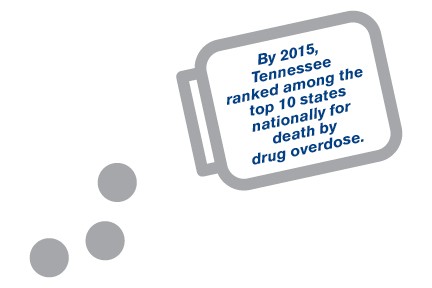
Getting Treatment
Those families wind up seeking treatment at centers such as Serenity Recovery Center and JACOA. Tennessee’s Department of Mental Health and Substance Abuse Services funds approximately 97 substance abuse treatment facilities statewide. But according to Mary-Linden Salter, executive director for the Tennessee Association of Alcohol, Drug, and Other Addiction Services, an advocacy group for these service providers, roughly 1,200 people are wait-listed for each residential detox program. “And most insurance companies will not pay for a medical detox, since coming off opiates, while extremely uncomfortable, won’t kill you,” says Salter.
The state’s mental health system is already overburdened and struggling to adequately care for the many Tennesseeans who need help. Salter says centers will frequently have empty beds because they have run out of funds. Cooper concurs: “For every 10 addicts who need treatment, only one receives it.”
Loyd, who has been clean 10 years from his own addiction to Vicodin, acknowledges that the state needs to increase services, particularly medication-assisted therapy for those who are addicted. “Medications like Suboxone help to keep patients in therapy. It allows you to manage the withdrawal symptoms.
“It’s not a one-size-fits-all problem,” he says. “We must take an open-minded, evidence-based approach to treatment. The goal is to prevent death and suffering from abuse.”
Sumrock agrees. He takes an integrated, holistic approach in his practice, using talk as well as medication-assisted therapy as a means of moving patients toward sobriety. “I’m helping people regain some normalcy and control of their addiction and making life more manageable,” he says. Patients frequently tell him how relieved they are to have their life back, a life not dictated by finding money to chase the next high.
With the opening of the Center for Addiction Science in Midtown, which treats people with substance abuse, gambling, and porn issues, UTHSC is hoping to more fully address addiction within the community. The college is also putting together a curriculum for medical students that will provide training in addiction medicine, course-work Sumrok is currently developing.
Treatment can work. Minton has been clean and sober for five years. Gone is the irritability and fog that clouded his thinking. Instead, his job is going well, he no longer smokes, he works out regularly, and enjoys spending time with his family.
“It’s so much more peaceful around my house,” he says. “I finally feel normal.”
Count it as one small victory in a large and ongoing battle.

Discard Meds Safely
The Shelby County Sheriff’s office oversees two drug-collection bins for the public to dispose of unwanted medications. The boxes are under 24-hour surveillance. Six new bins will be added in Shelby County at area Walgreens this fall.
Locations:
Sheriff’s Office, Arlington Substation – 11670 Memphis-Arlington Rd., 38002
Shelby County Sheriff’s Department, 993 Dovecrest Rd., 38134
Hours: Monday-Friday, 8 a.m.-4 p.m.
What can be discarded: Unwanted, outdated, and unused prescription drugs, vitamins, over-the-counter liquids (in leak-proof containers), medicated ointments, lotions, or drops, and pet medications. NO: Syringes, IV bags, illegal drugs & narcotics (though police will accept if placed in the container).
At home: Remove medication from original packaging and mix with kitty litter or coffee grounds. Place mixture in a bag and dispose of in the trash.
For more: tn.gov/behavioral-health/section/substance-abuse-services.
Frequently Prescribed Controlled Substances
Three of the top 5 most prescribed medications from Tennessee’s controlled substance monitoring database are opioids.
1. Hydrocodone products – opioid
2. Alprazolam – generic name for Xanax; a benzodiazepine
3. Oxycodone products – opioid
4. Zolpidem – generic name for Ambien
5. Tramadol – opioid: Brand names Ultram, ConZip, Ryzolt
Source: Tennessee Department of Health
12th National Prescription Drug Take-Back Day
Saturday, October 22 • 10 a.m.-2 p.m.
A safe, convenient way for Shelby County residents to get rid of unused or expired medications. The Shelby County Sheriff’s department will manage three locations during this annual take-back. You can drop off unwanted drugs here:
– County Building, 1080 Madison, 38103
– Kroger, 7942 Winchester, 38125
– Kroger, 11635 Highway 70, 38002
Do You Need Help? Call the TN Redline: (800) 889-9789
Callers receive up-to-date information and referrals for alcohol, drug, gambling, and other addiction issues. Three referral sources are given when possible. Coordinated by the Tennessee Association of Alcohol, Drug, and other Addiction Services. • taadas.org
Or go to the Tennessee Department of Mental Health and Substance Abuse Services • tn.gov/behavioral-health

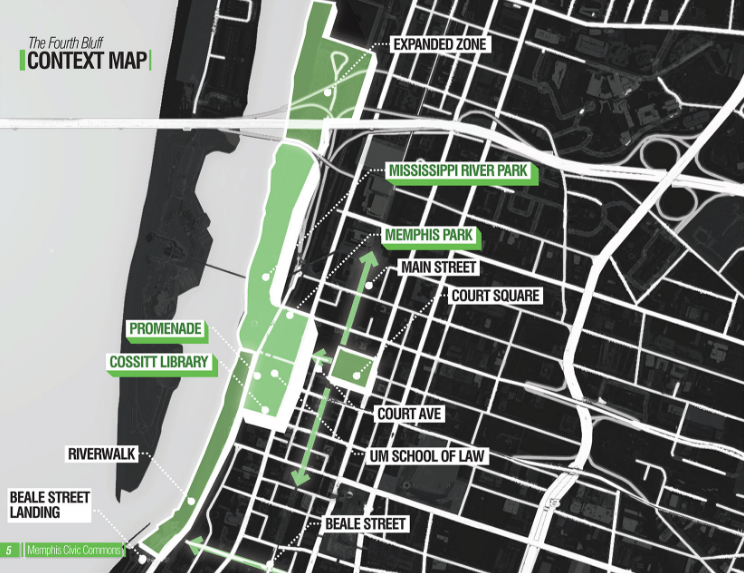
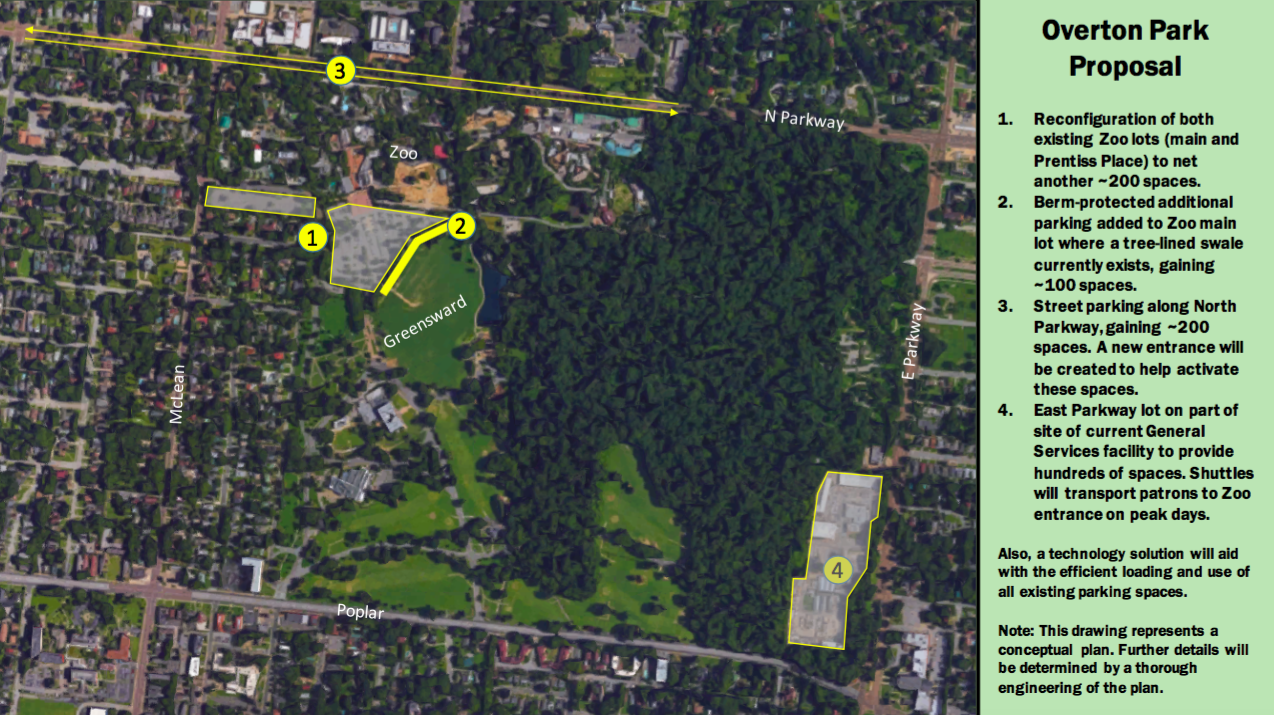 City of Memphis
City of Memphis 







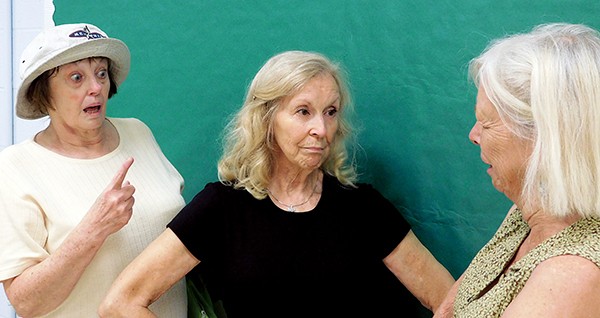

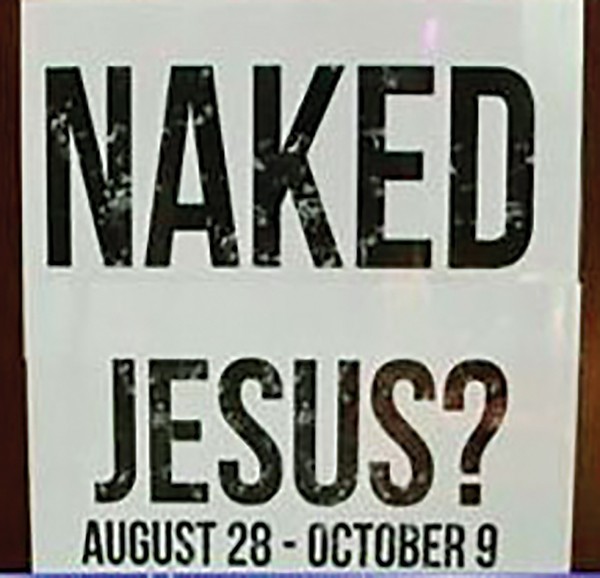
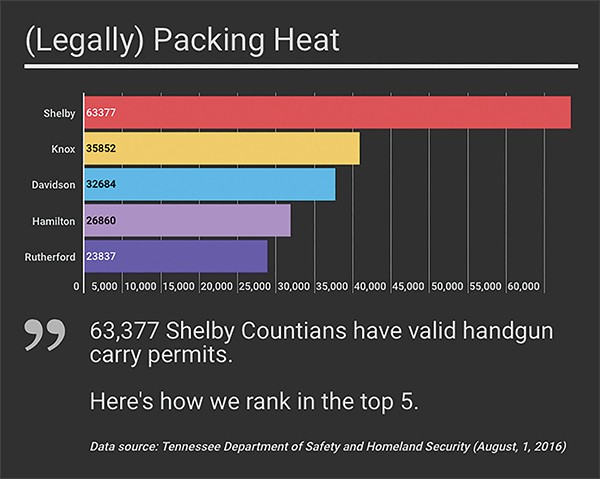 Toby Sells
Toby Sells 